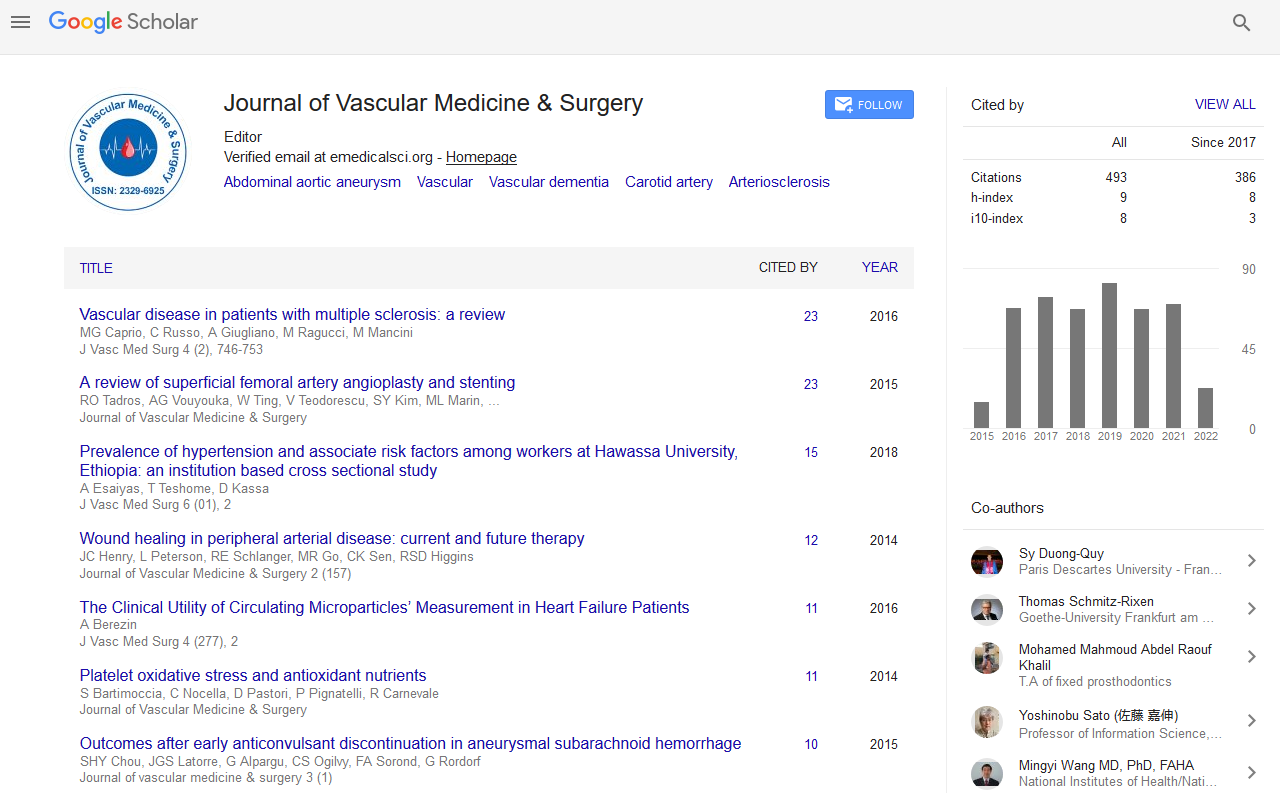Indexed In
- Open J Gate
- Academic Keys
- RefSeek
- Hamdard University
- EBSCO A-Z
- OCLC- WorldCat
- Publons
- Euro Pub
- Google Scholar
Useful Links
Share This Page
Journal Flyer

Open Access Journals
- Agri and Aquaculture
- Biochemistry
- Bioinformatics & Systems Biology
- Business & Management
- Chemistry
- Clinical Sciences
- Engineering
- Food & Nutrition
- General Science
- Genetics & Molecular Biology
- Immunology & Microbiology
- Medical Sciences
- Neuroscience & Psychology
- Nursing & Health Care
- Pharmaceutical Sciences
Abstract
Difficulties in the Management of Civilian Peripheral Vascular Trauma and their Complications at the University Teaching Hospital of Yaoundé, Cameroon
Ngo Nonga B, Savom EP, Bang GA, Londji GM and Essomba AG
Background: The incidence of peripheral vascular lesions remains undetermined in Cameroon. The objective of this study was to report our experience with the management of peripheral vascular trauma in civil life at the University Teaching Hospital of Yaoundé. Patients and methods: We have reviewed retrospectively all the cases of peripheral vascular trauma treated at the Yaoundé’s University Teaching Hospital between 2008 and 2010. We excluded all patients with crushing members or traumatic amputations. Case notes were reviewed for demographic factors, nature of trauma, vascular injury observed and treatment applied. Results: We found 12 patients on 2,436 traumas giving a prevalence of 0.5%. There were 11 men and one woman, mean age was 28.5 (18-55) years. All patients were victims of a penetrating wound. Nine patients were received at the stage of complications from 6 weeks to 2 years after the trauma: 5 of them had arteriovenous fistulas and the other four presented with pseudo aneurysms, they were all operated successfully. Three patients came in emergency at the time of the injury and they presented lesions to the popliteal vessels, brachial and radial arteries. They were amputated after a failed attempt revascularization performed beyond 6 hours after trauma. Conclusion: Vascular injuries are usually overlooked in our environment, and we would recommend a vascular exam in patients with penetrating injuries to the limb to avoid missing them.


